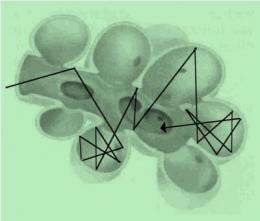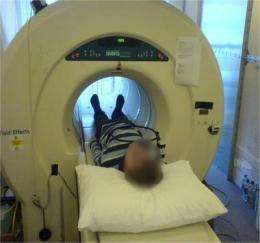New study fundamentally alters our understanding of lung growth

A ground-breaking international study into the ways lungs grow and develop has challenged existing medical understanding that our lungs are completely formed by the age of three.
The researchers, led by a team at the University of Leicester, put forward a theory for the first time based on research evidence that new air sacs, called alveoli, are constantly being formed. This contradicts information in most medical textbooks that explain that the tiny air sacs begin to develop before birth (around the 6th month of pregnancy) and continue to increase in number until the age of about 3 years.
Dr. Manjith Narayanan, one of the leaders of the study from the University of Leicester, said: "It was believed that there was no further increase in the number of alveoli beyond that age, and that the existing alveoli just expanded as the lungs grew bigger until final adult size was reached."
"Our study has challenged this by suggesting that new alveoli continue to be formed as the lungs grow."
The study, published online ahead of print in the American Journal of Respiratory and Critical Care Medicine, was a collaboration between researchers in the Department of Infection, Immunity and Inflammation, University of Leicester, the Department of Physics and Astronomy, University of Nottingham, and the University of Bern. It was funded by The Wellcome Trust1.
The researchers studied over 100 healthy volunteers aged between 7 and 21 years. Each volunteer had a range of breathing tests in Leicester, and was then accompanied to Nottingham for a special magnetic resonance (MR) scan, during which they breathed in hyperpolarised helium and held their breaths.

Dr. Narayanan, a Clinical Research Fellow, explains:
"The helium is hyperpolarised, which means that the molecules all line up in one direction and it then behaves like a magnetised gas. Within the scanner, we can measure how the magnetism decays, and this in turn depends on the size of the air sacs – alveoli – which contain the helium. The technique is safe and not painful or uncomfortable in any way."
Senior Lecturer at Leicester Dr. Caroline Beardsmore describes the study:
"We studied small children, whose lungs contain approximately one litre of air, and full-grown adults with lung volumes of around four litres. We found very little difference in the size of the alveoli across everyone we studied. If the size of the alveoli are hardly changing, this can only mean one thing – as our lungs increase in size, we must be growing new alveoli."
Professor Mike Silverman, Emeritus Professor of Child Health at Leicester, adds:
"This research has important implications. If we can continue to develop new alveoli beyond early childhood, going on through adolescence, there is the potential for lung repair following injury that was never realised before. Conversely, external factors (possibly including inhaled pollution) could have a negative impact on lung development. We now have the basis for looking at many factors with the potential to impact on lung health in the future."
More information: Manjith Narayanan, John Owers-Bradley, Caroline S. Beardsmore, Marius Mada, Iain Ball, Ruslan Garipov, Kuldeep Panesar, Claudia E. Kuehni, Ben Spycher, Sian E. Williams, Michael Silverman. Alveolarization continues during childhood and adolescence: new evidence from 3He magnetic resonance. Am. J. Respir. Crit Care Med In Press published ahead of print on October 27, 2011 as doi:10.1164/rccm.201107-1348OC

















